I am a fan of the weird 1960s TV series called “The Prisoner”. This cult classic was written by and starred the actor Patrick McGoohan, who had previously worked on a top-rated British TV series called “Danger Man”. The Prisoner is an enigmatic, brilliant TV series that has left a lasting impression on fans worldwide. If you don’t know it, here is an explanation (language warning):
“The Prisoner” was filmed in the strange, whimsical, and wonderful village of Portmeirion in Wales. I had an unforgettable day visiting Portmeirion. Walking through its winding streets felt like stepping into the world of Number 6. The architecture and colourful buildings transport you to another realm, each corner filled with a hint of the surreal. In real life, unlike the TV series, the town does not have any full-time residents. It purely exists for day visitors and holiday stays.
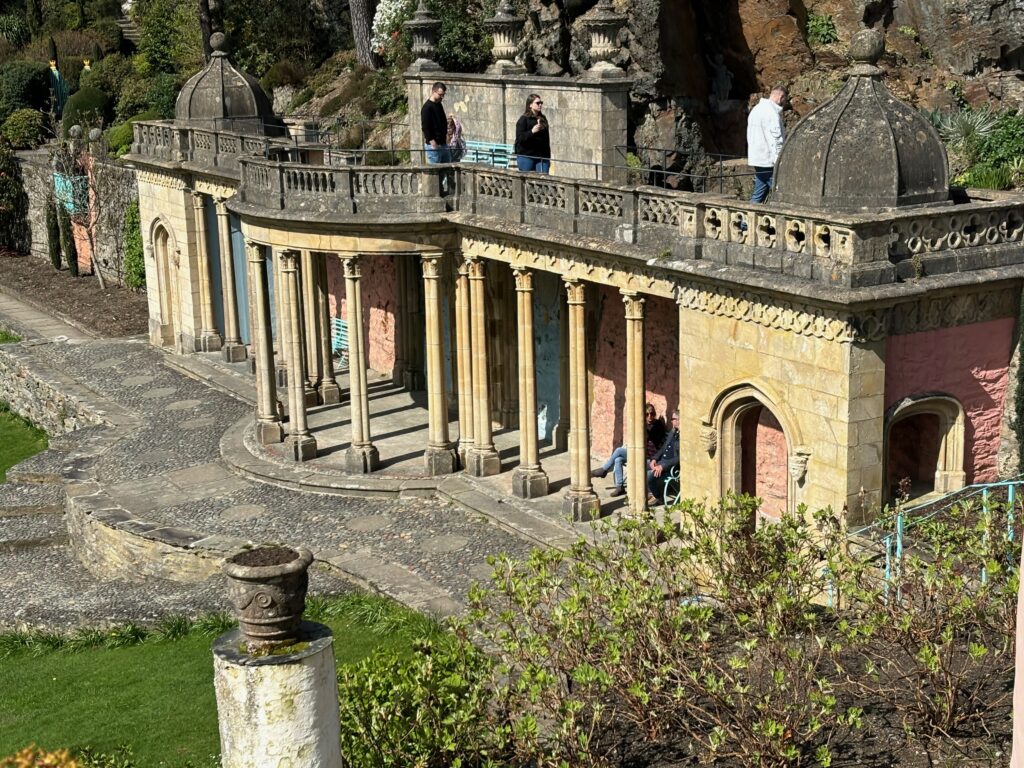
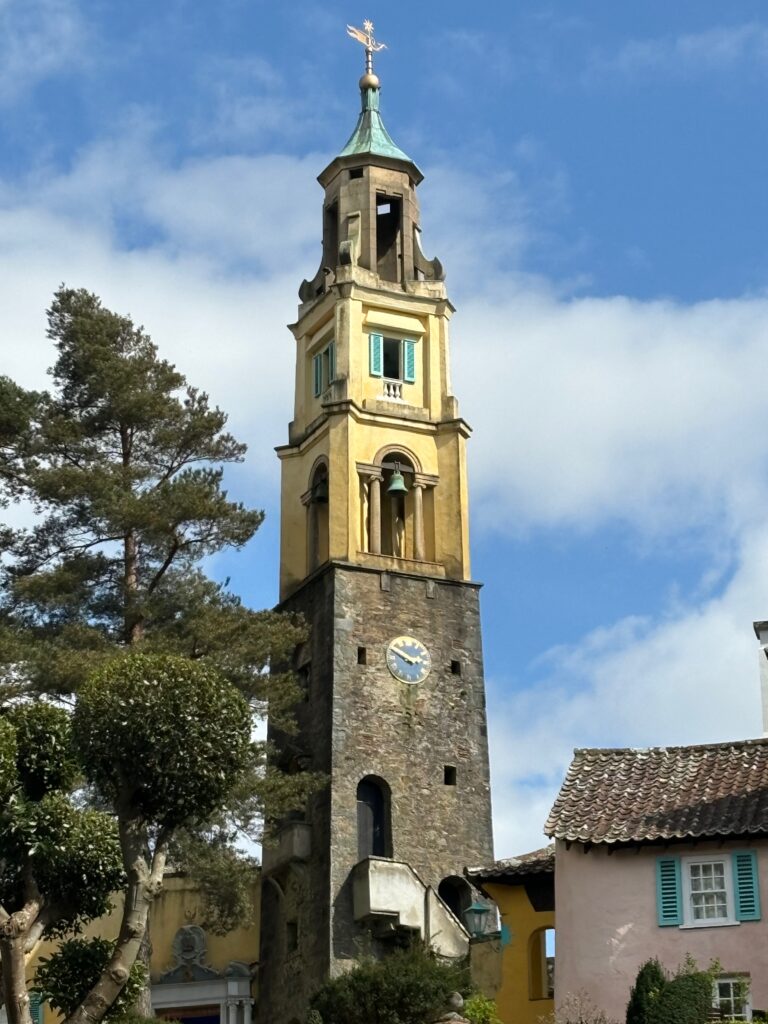
The giant chessboard and other iconic scenes from the series were amazing to see in person.
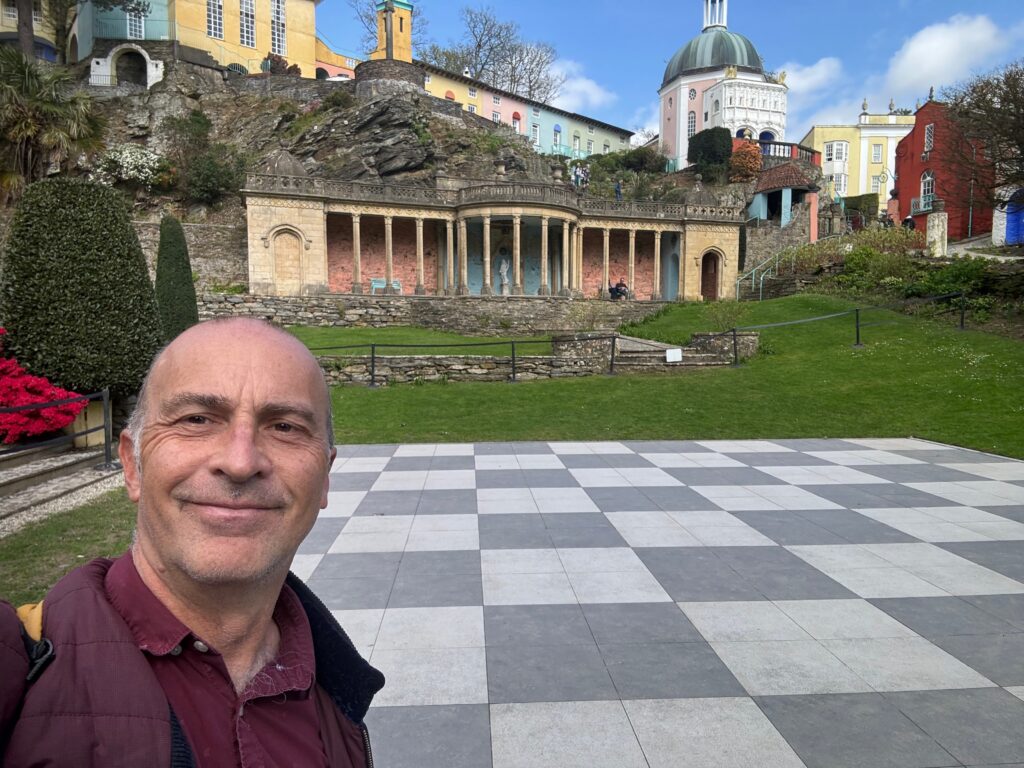
I even expected a giant white ball to come bouncing around a corner! In the TV series, the village is guarded by “Rover”, a robotic ball that coerces, or incapacitates or kills escaping inhabitants.

Inspiration and Design
Portmeirion’s architecture is unique and eclectic, reflecting a diverse range of styles and influences that contribute to its whimsical and dreamlike quality. It was designed and built by Sir Clough Williams-Ellis, an architect and aristocrat, between 1925 and 1973. He envisioned a village that would combine architectural beauty with the natural landscape. Some features of the village include:
- Unique Layout, carefully designed to follow the natural contours of the land. This creates a sense of surprise and discovery as you walk through the winding paths and explore hidden corners. Great for mysterious spy TV shows!
- Piazzas and Courtyards allow visitors can relax and enjoy the view. These areas often include fountains, sculptures, and other decorative elements.
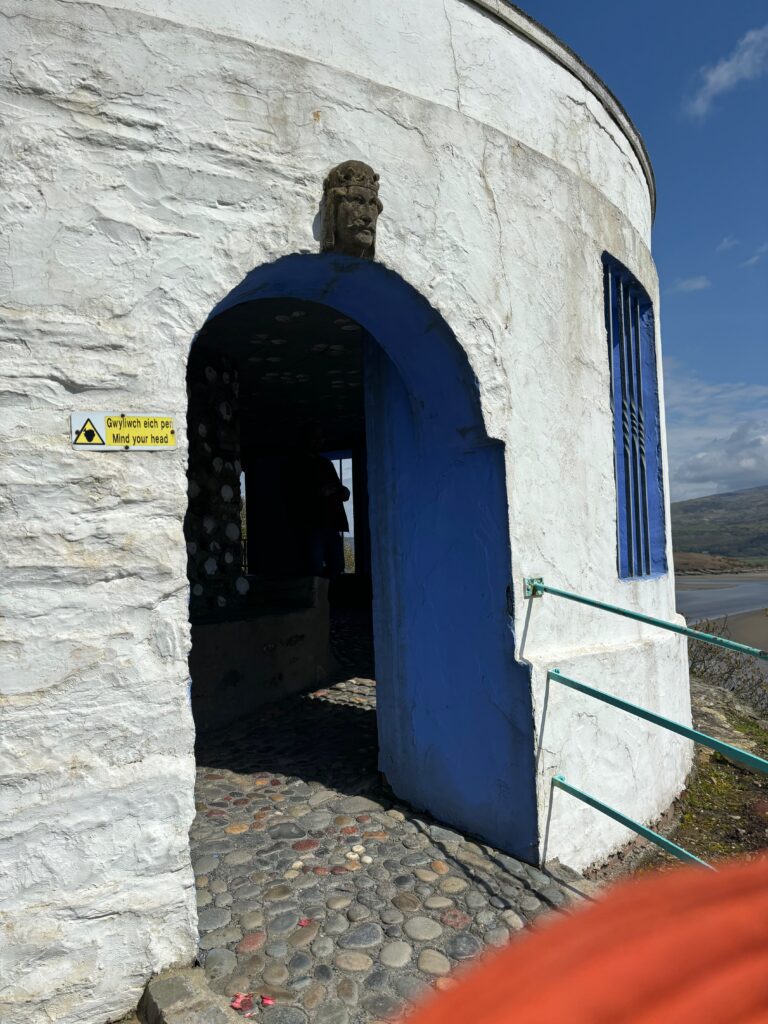
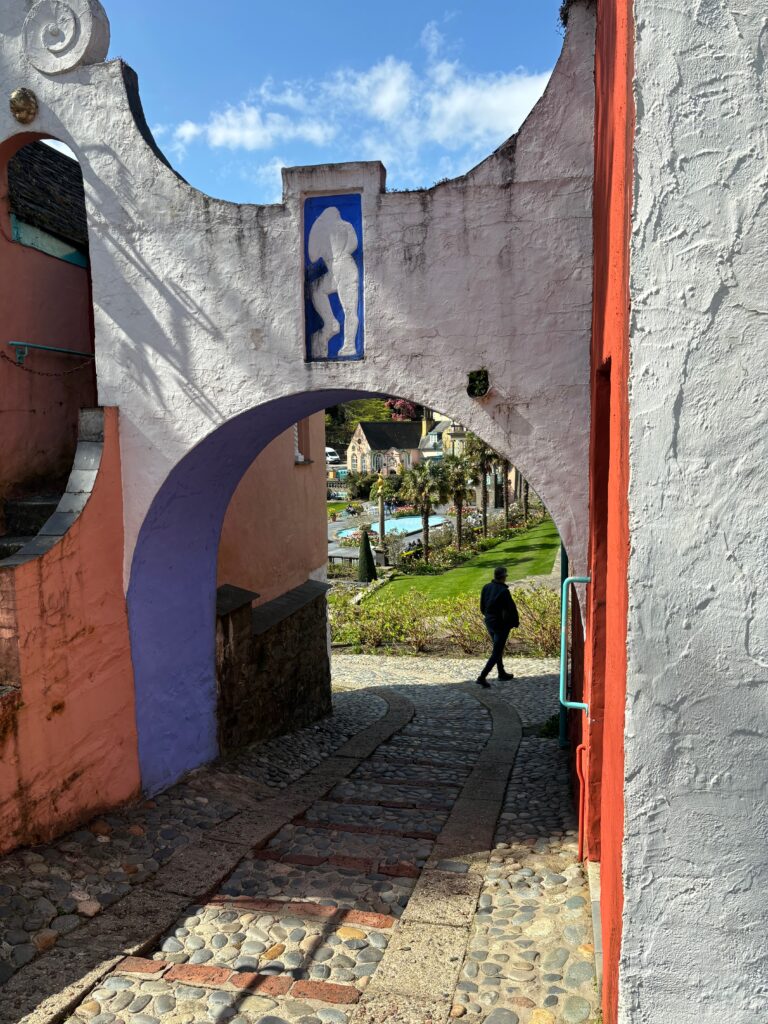
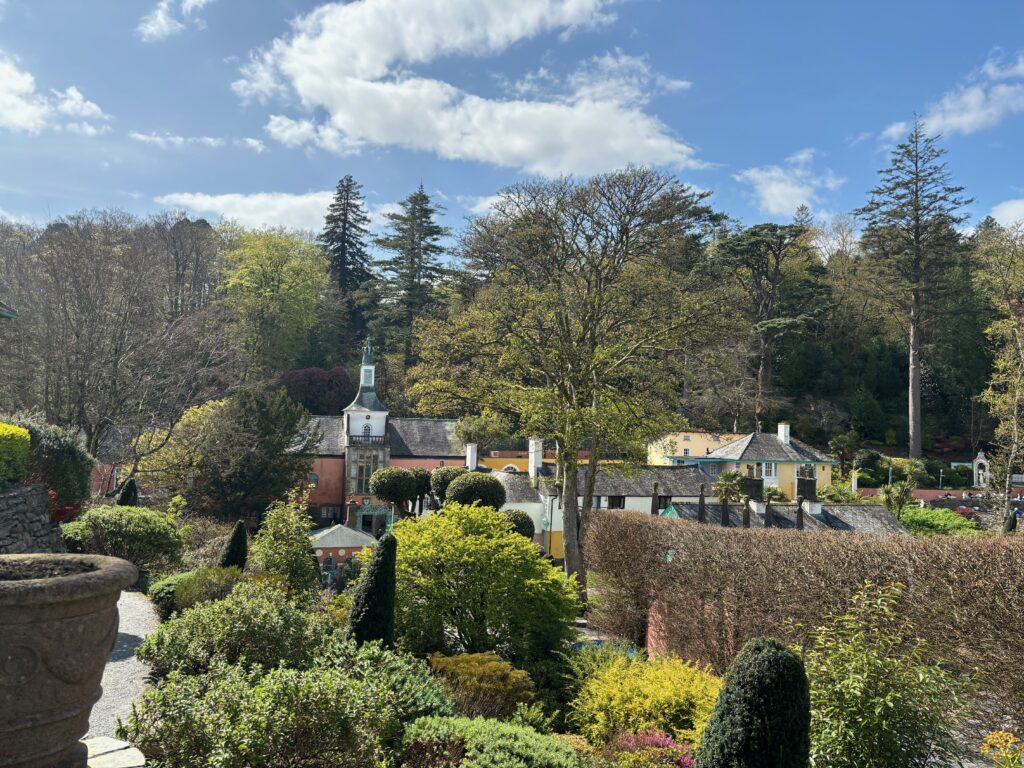
- An architectural mix of classical and Baroque elements, with domed structures, bell towers, cupolas, and loggias. Ornamental columns, intricate arches, and decorative motifs add to the visual interest.
- Colourful Buildings: One of the most noticeable aspects of Portmeirion’s architecture is the vibrant palette of the buildings. This colourful approach creates a cheerful and inviting atmosphere, contrasting with the lush greenery of the surrounding environment.
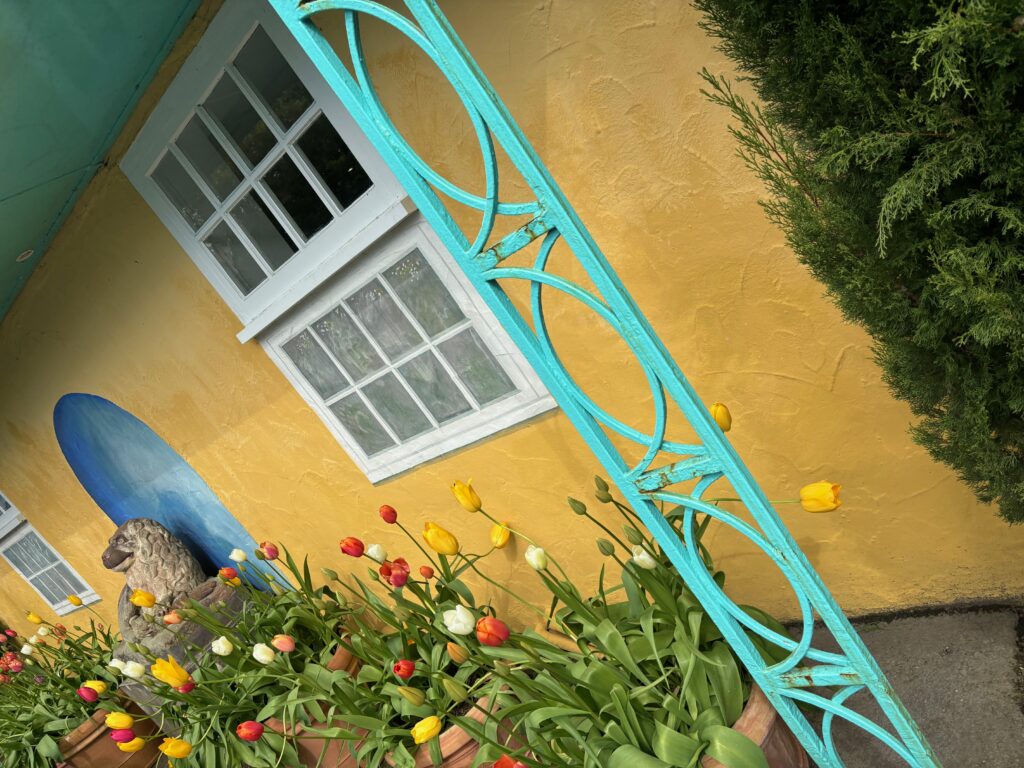
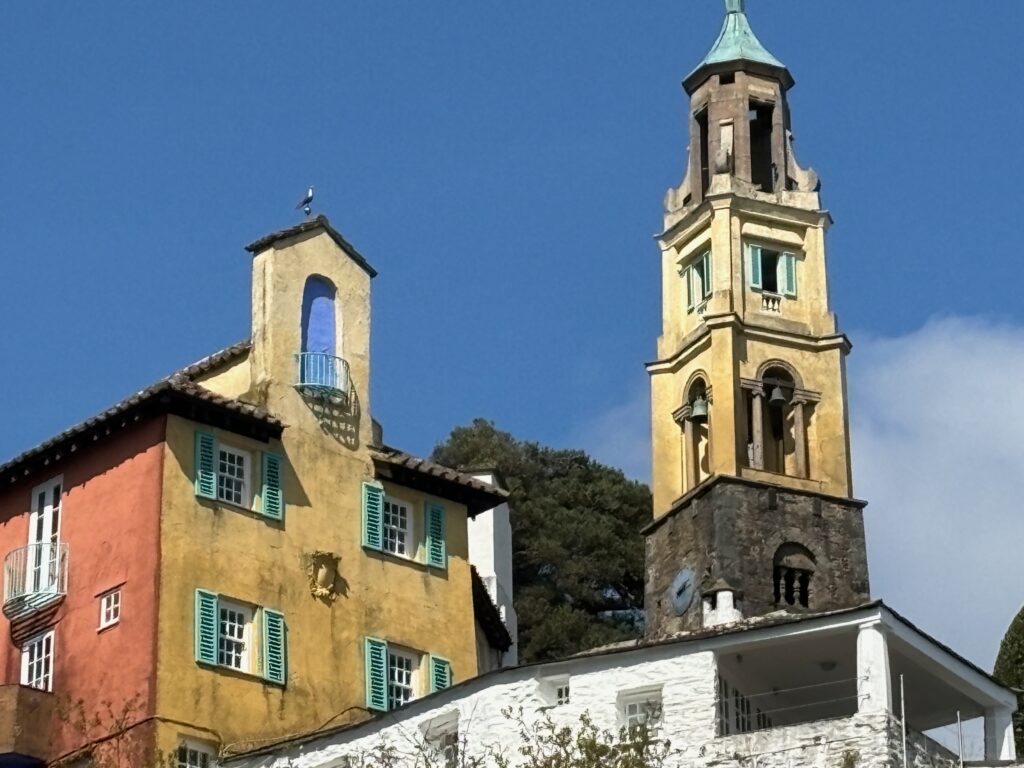

Today, Portmeirion is a designated conservation area, and the village’s architectural integrity is carefully maintained. The Portmeirion Trust, which manages the site, has continued with the founding philosophy. The natural environment surrounding Portmeirion is as stunning as the village itself. With its lush forests and breathtaking views of the estuary, it’s a haven for nature lovers. The gardens and trails offer a peaceful escape and a chance to connect with the area’s unique flora and fauna.
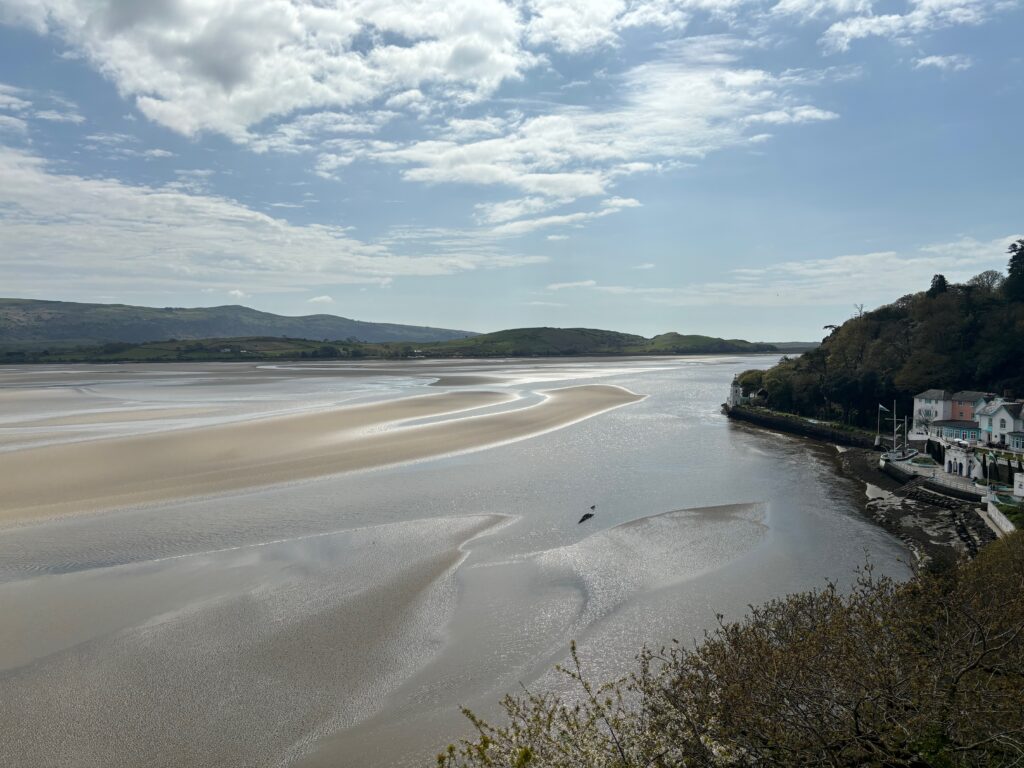
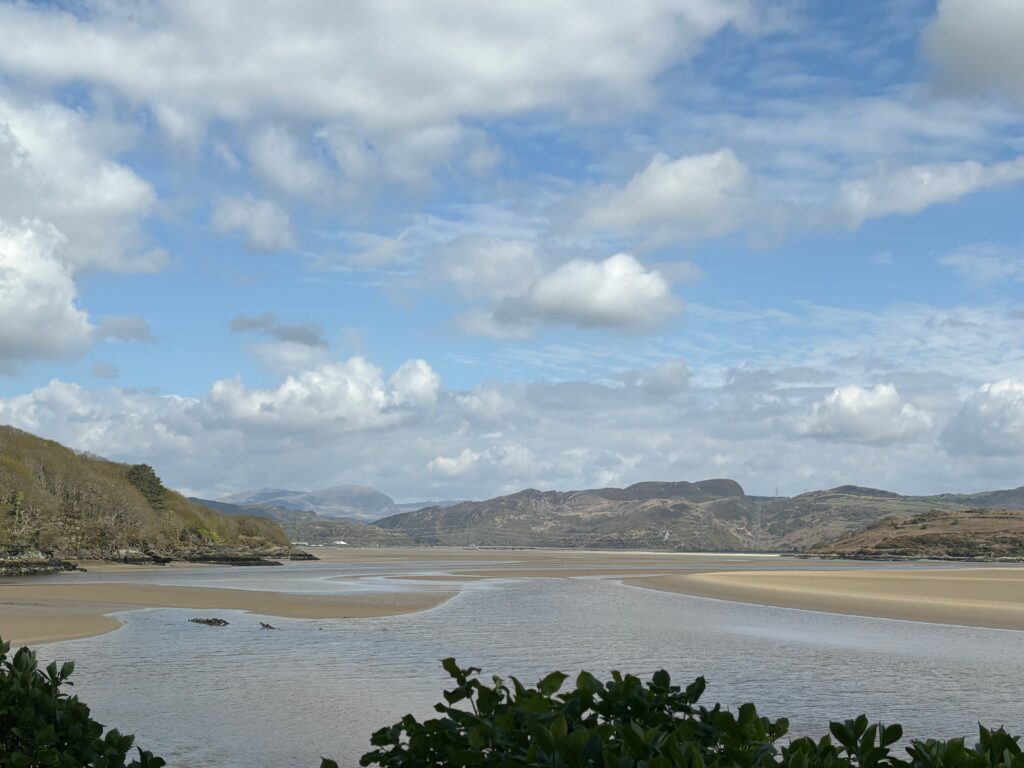
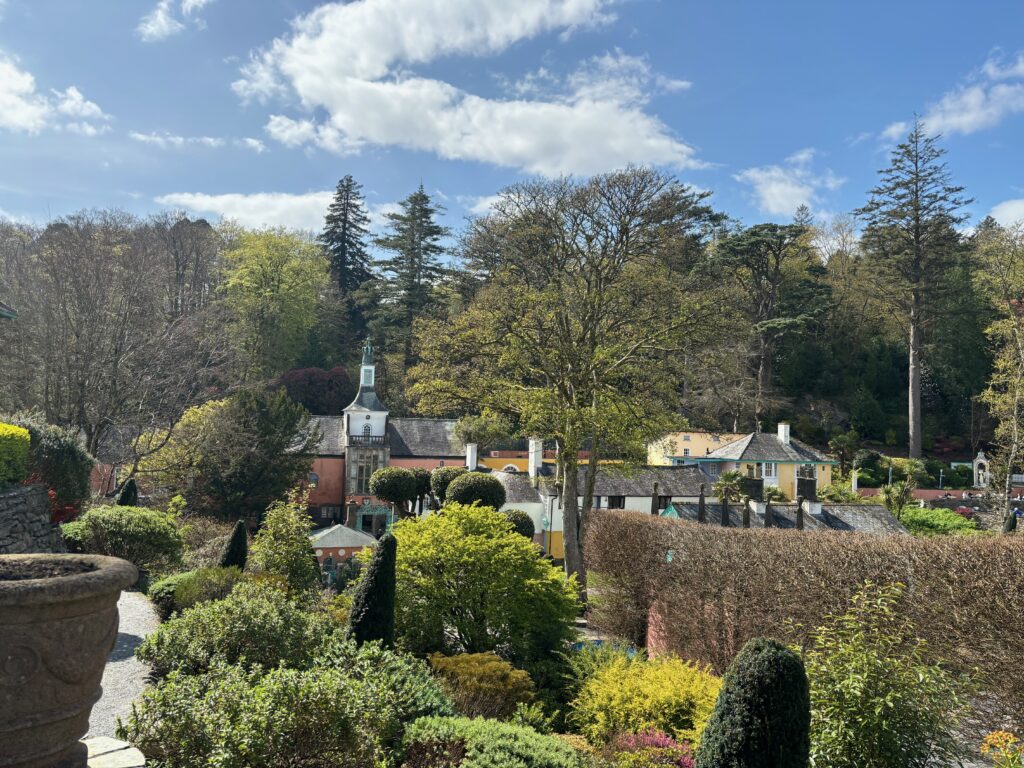
Portmeirion is also known for its distinctive pottery. The company was founded in 1960 by Susan Williams-Ellis (19181-2007) , Sir Clough’s daughter, to create pottery souvenirs for the village shop. Today, Portmeirion ceramics are renowned worldwide, with various collections and designs. You can purchase them online or at the shop at Portmeirion or in the nearby town of Porthmadog.
Accommodation and Meals
Portmeirion has two four-star hotels, some self-catering cottages, a handful of shops, a spa, four cafes, a couple of restaurants and a popular gelateria ice cream shop. No one lives in the village permanently.
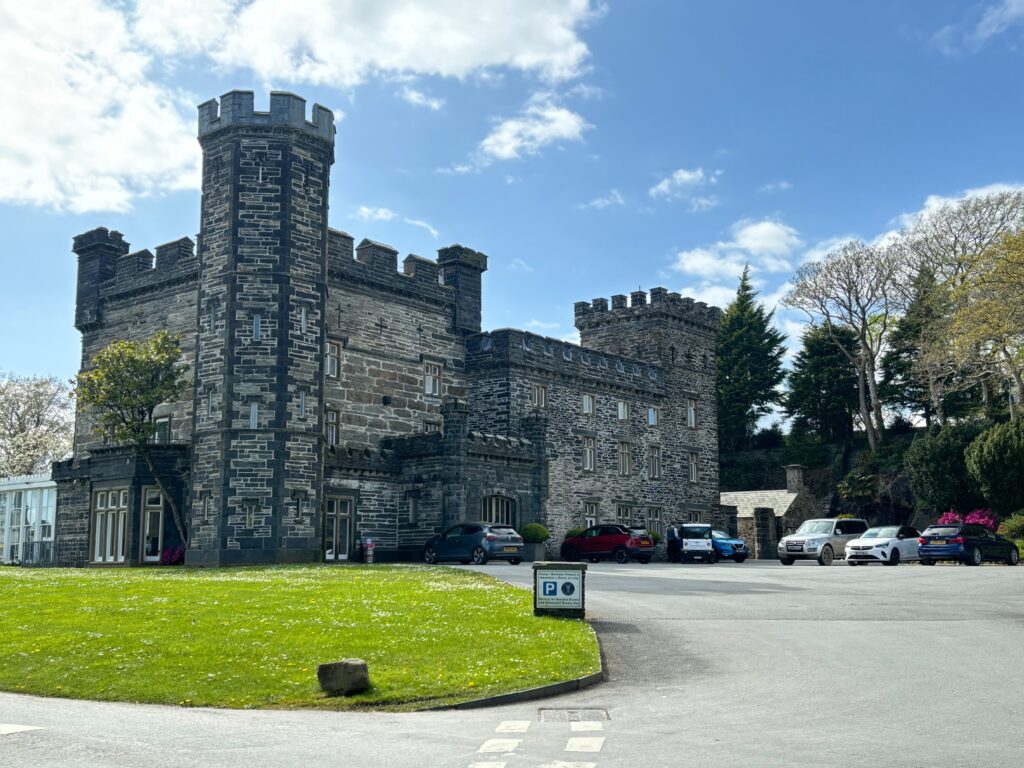
Castell Deudraeth (pictured) is one of the village’s four-star hotels. It is a Victorian castellated building that was constructed by David Williams, a local politician in the 19th century in the Gothic Revival style.
Sir Clough Williams-Ellis, the founder of Portmeirion bought it in 1931 and incorporated it into his vision for the village.
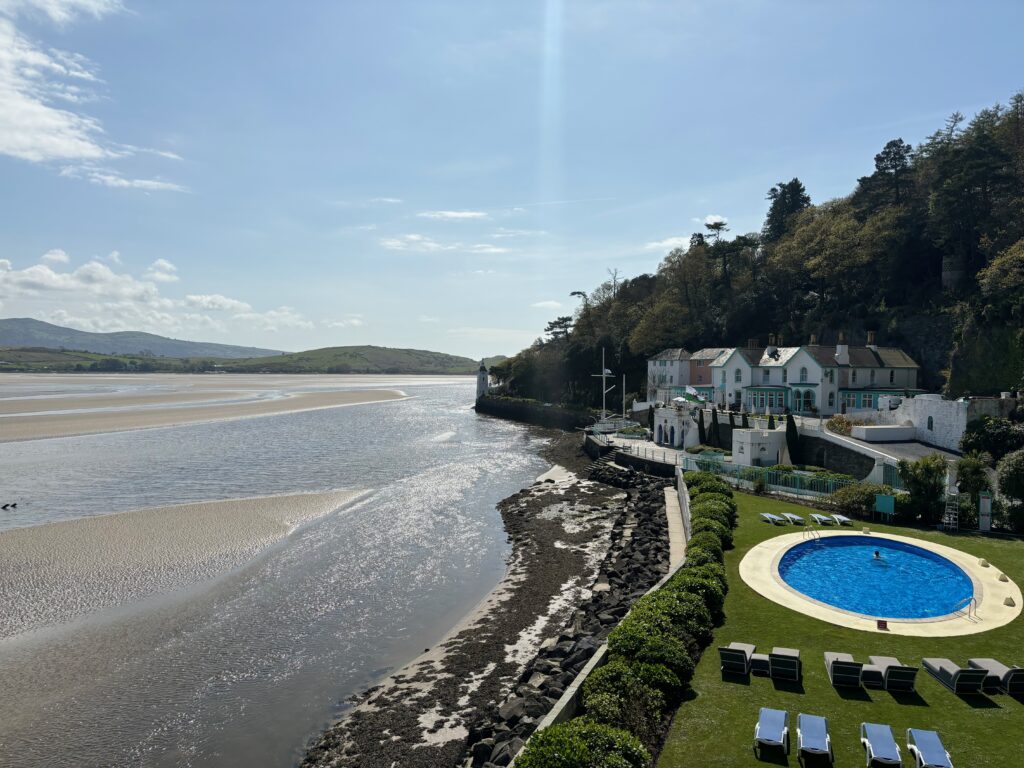
The Hotel Portmeirion built in 1926 appears in The Prisoner. In 1930, a curved dining room with incredible views over the Dwyryd Estuary was added.
In 2005, Sir Terence Conran redesigned it in an Art Deco style. There is also an outdoor dining area and a heated swimming pool (pictured)
Getting to Portmeirion
To reach Portmeirion by road, follow the A487 towards Porthmadog, then turn onto the A498. Portmeirion is well-signposted, so look for signs as you get closer to Minffordd. The village has a large visitor car park with ample parking space.
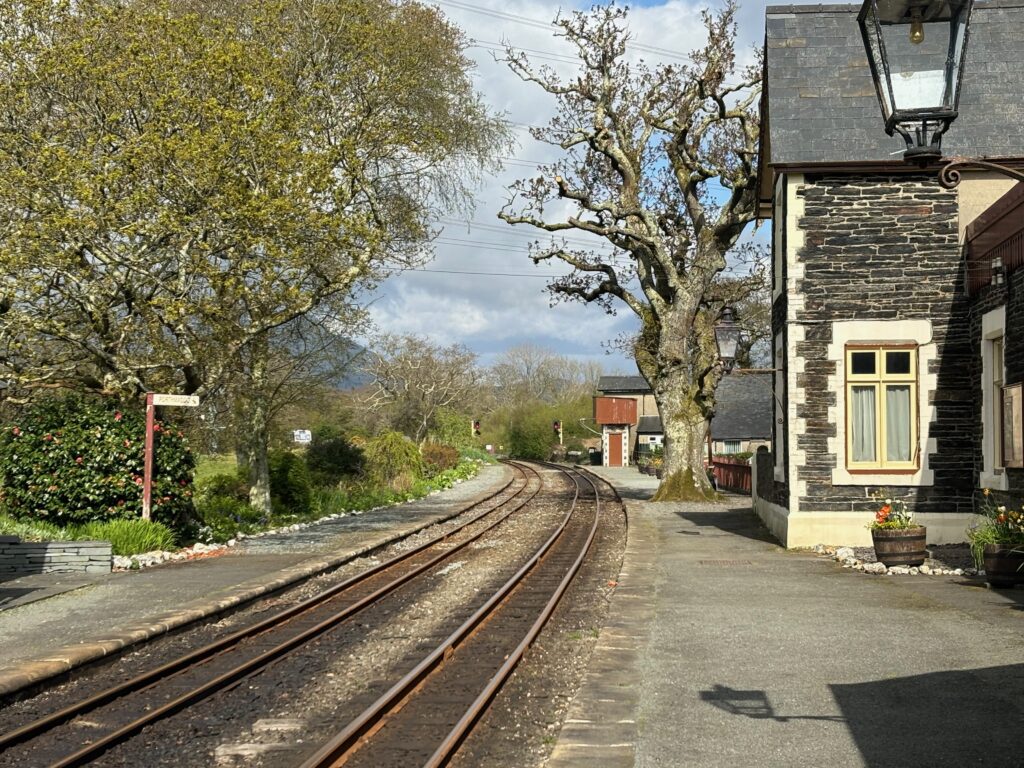
Public transport to Portmeirion involves taking a Transport for Wales train to Porthmadog, then a short taxi ride to the village. Alternatively, take a mainline train or the heritage Ffestiniog Railway to Minffordd. From there, it is a 20-minute walk to Portmeirion. A bus also operates from Porthmadog to Minffordd. For hotel guests, complimentary transport from the local train and bus stations is available upon request.
The village has become a popular destination for visitors seeking a blend of art, history, and natural beauty. I would love to visit again. Unlike in the TV series, people can leave (and return).
“be seeing you”


Be seeing you….